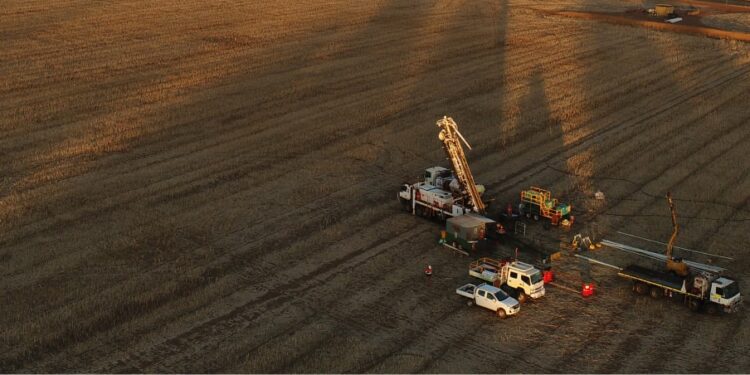Caspin Resources Limited (ASX: CPN) has identified exciting rhodium results of further PGE assaying from drill hole YARC0022 at the XC-22 Prospect at the company’s Yarawindah Brook PGE-Ni-Cu Project in Western Australia.
Following the significant results in YARC0022 announced in February 2022, the company elected to analyse the lower PGE-rich mineralised zone for the full six PGE suite of elements, which consist of iridium (Ir), osmium (Os), rhodium (Rh) and ruthenium (Ru), as well as platinum and palladium.
This analysis has returned significant grades of rhodium associated with the already recognised platinum and palladium mineralisation, with a peak value of 465ppb Rh. Grades greater than 100ppb, or 0.1g/t, are considered highly significant.
The revised intercepts are as follows: 13m @ 0.17g/t Pd, 0.74g/t Pt, 0.11g/t Rh, 0.26% Ni, 0.21% Cu from 101m, including 2m @ 0.40g/t Pd, 2.45g/t Pt, 0.41g/t Rh, 0.23% Ni, 0.09% Cu from 112m. When adding the minor gold contribution, this can be expressed as 13m @ 1.08g/t 4E, 0.26% Ni &
“This is an interesting new development for XC-22 and indeed our entire Yarawindah Brook Project,” CEO, Greg Miles, said.
“It’s a pleasant surprise given this is the first time we’ve ever assayed for rhodium and bodes well for the discovery of more mineralisation.
“Because of its value, small amounts as low as 100ppb can make a significant contribution to the economics of PGE deposits.
“We’ve now got an extensive assaying programme ahead of us and if we can demonstrate that rhodium mineralisation occurs consistently with platinum and palladium at XC-22, then we could be another step closer to an economic discovery.
Implications for PGE Exploration at Yarawindah
Despite the value of rhodium, routine analysis is rarely undertaken because of the scarcity of the metal and significant additional cost to assay the full 6-PGE suite.
Prior to Caspin’s involvement in the project, only five samples had ever been assayed for rhodium as part of a metallurgical sighter programme in 2006. Therefore, the potential for rhodium mineralisation has never been evaluated.
Mr Mile said the company is extremely encouraged that its first-ever assaying of rhodium has returned such significant results.
The company will now review all of its past exploration results with a view to selecting zones of PGE-rich mineralisation for six-element PGE assay, with the aim to identify further rhodium mineralisation. The current phase of drilling at XC-22 is progressing well.
Assaying for rhodium will be conducted after confirmation of platinum and palladium mineralisation, with a focus on the pyroxenite-peridotite contact zone which appears to be the host of mineralisation intersected so far.
Some Facts About Rhodium
• Used in similar industrial applications to platinum and palladium, such as catalytic converters, but is generally more efficient.
• Chemically inert and doesn’t oxidise making it an attractive alloying agent that improves resistance to corrosion.
• Extremely rare, usually produced as a by-product of nickel-copper and platinum–palladium processing using conventional sulphide flotation.
• Global production is dominated by South Africa with smaller contributions from Russia, Zimbabwe and Canada.
• Over the past three years the price has ranged from approximately US$2,000oz to US$27,000oz and is currently circa US$20,000oz.
For further information please visit: https://www.caspin.com.au/












